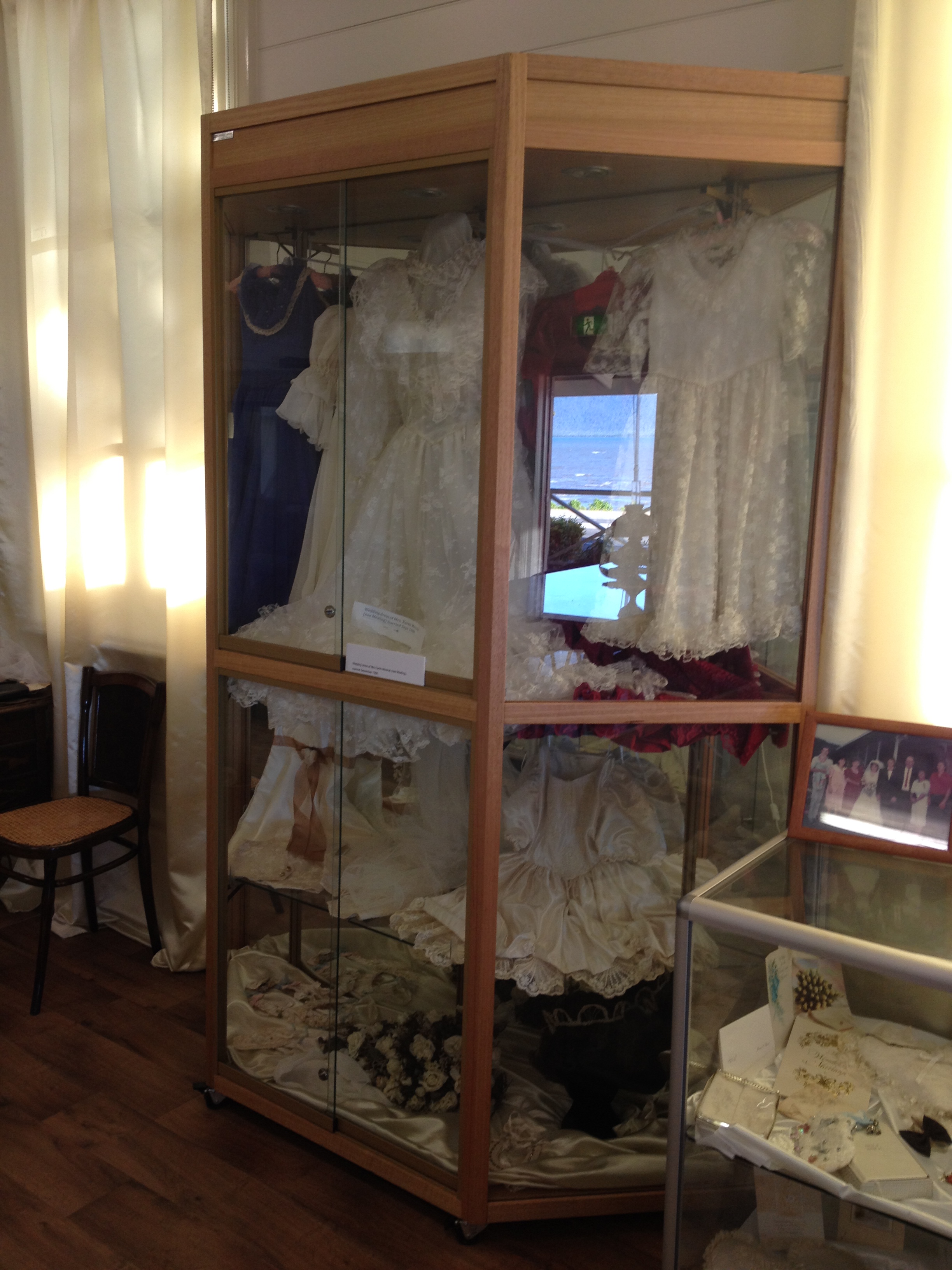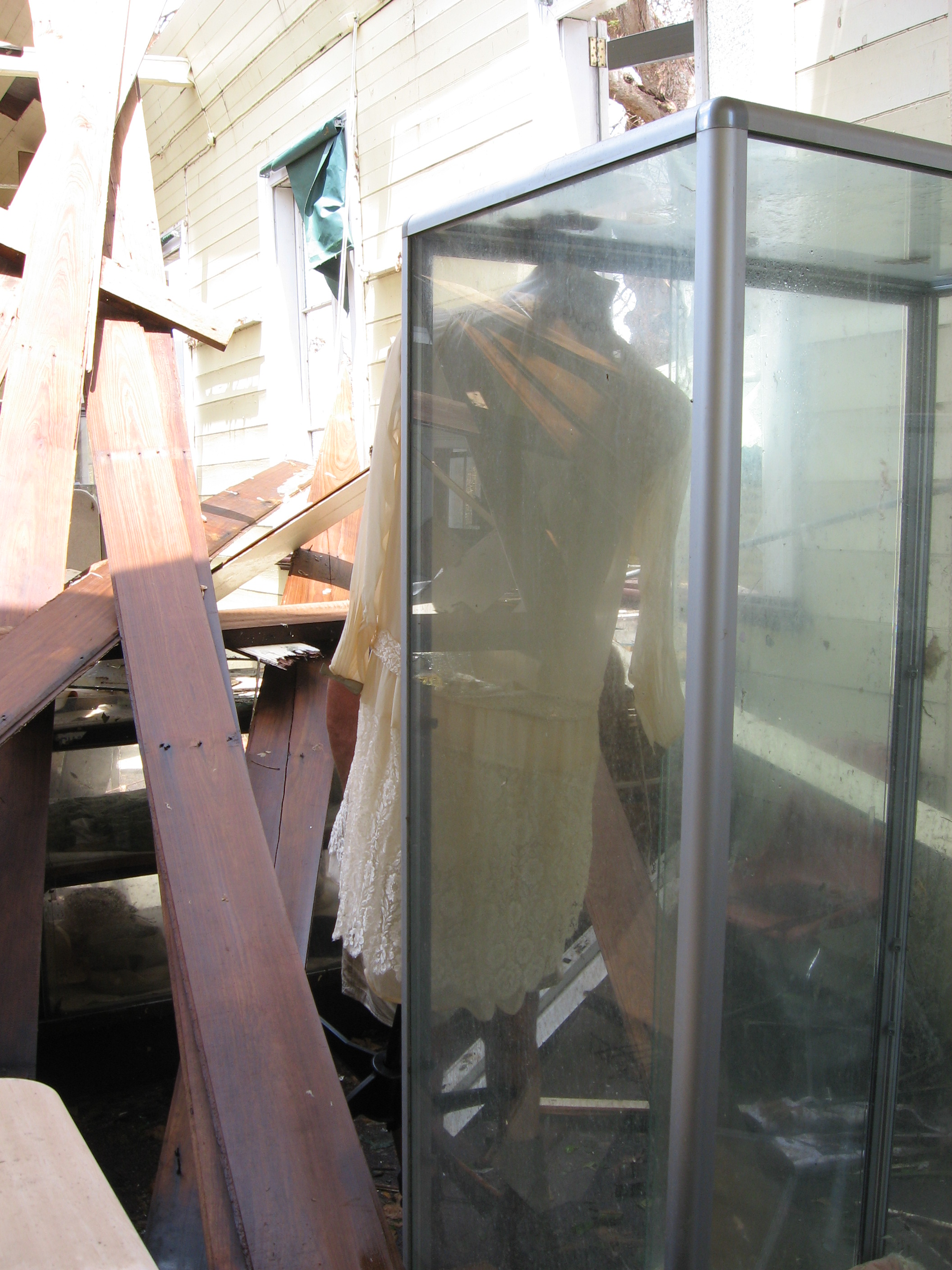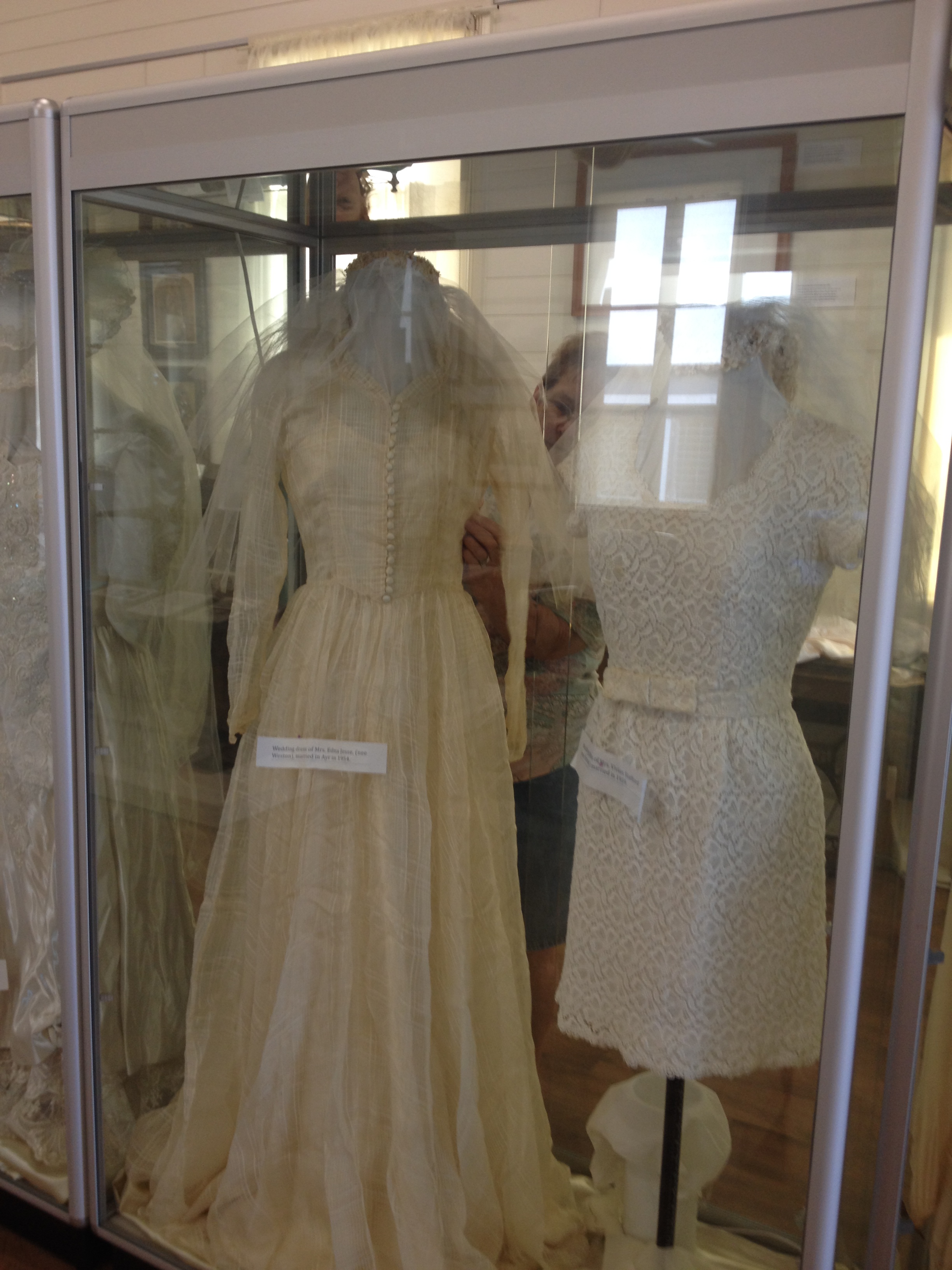Ewen McPhee and Dr Jo Wills recently worked at the Cardwell Bush Telegraph Museum to assist with the rehanging of their cyclone flag. The red cyclone flag, also called a cyclone pennant, has been displayed at the Bush Telegraph Museum since it opened in 2003.
The museum is housed in the old Cardwell Telegraph and Post Office which was built in 1870 and is one of the oldest buildings in North Queensland. It is on the Queensland Heritage Register, the Register of the National Trust and the Register of the National Estate of the Australian Heritage Commission.
The building itself was prefabricated in Brisbane and shipped to Cardwell where it was erected on the present site. It is considered to be one of the earliest examples of prefabricated post office buildings, reflecting the need to erect substantial Government buildings in remote settlements where structures were otherwise relatively unsophisticated.

Cyclone flag before rehanging
Cyclone flags were used to warn about approaching cyclones. Murray Massey a member of the Cardwell and District Historical Society, and long time Cardwell resident spoke to Denise Raleigh who worked on the Telephone Exchange from 1955 to 1959.
Denise said there was a yellow ‘alert’ flag and a red ‘warning’ flag flown at the Post Office when cyclones approached Cardwell. The decision on when to raise the flags was made locally by the Postmaster, Mr Collins, who was guided by the barograph that measured the changes in atmospheric pressure that can be sudden and dramatic when a cyclone nears.
Murray recalls the face of the barograph was always on public display through a glass panel on the Post Office verandah, and people visited the Post Office to check the barograph to assess the weather outlook. Like Murray, Denise recalls that the alert and warning flags were flown from a flag pole on Victoria Street in the front yard of the Post Office.
Murray believes the need to fly a warning flag publicly in the mid-20th century, is highlighted by the fact that few people had landline telephones in that era, long before mobile phones were invented. Denise recalls that there were only 30 lines available on the Cardwell Telephone Exchange switchboard, and only about 22 of them were connected, when she worked there. This means only 22 homes or businesses in Cardwell had a telephone. There was a public phone at the Post Office. Denise says there were lines from the Cardwell exchange through which customers could be connected with exchanges at Carruchan, Tully, Ingham and Townsville, and that calls to Brisbane and beyond had to be routed through Townsville.
Denise recalls the following occurrences during cyclone Agnes which, unusually, moved northwards along the east coast, buffeting Proserpine, Bowen and the Burdekin before its eye passed over Townsville around 2.00pm on March 6 1956 and continued northwards, swinging inland near Ingham before weakening.
“Mr Collins (Percy Collins) was the Postmaster then and he never called the Telephone Exchange girls by their names: we were all ‘Girlie’ to Mr Collins.
During one cyclone I rode my bicycle to work to begin the morning shift on the exchange at 7.00 am. The wind was blowing very strongly from the direction of Greenwood Hill (inland to the north west) so Mr Collins already had the yellow alert flag flying to warn people of the danger of a cyclone approaching, and he said: ‘Girlie, I’m surprised to see you this morning.’
‘I didn’t have to pedal Mr Collins, because the wind pushed me along Victoria Street,’ I replied.
I remember though, having to be careful while riding my bicycle, to dodge the metal garbage bins which were flying all around.
By midday Mr Collins had hoisted the red cyclone warning flag. It was unusual to have cyclonic winds coming from the inland. Some homes – I think a couple of the Railway Fettler’s cottages in Bowen Street and Mr’s Bird’s Garage business on the corner of Bowen and Brasenose Streets, were among those that lost roofing.”

Cyclone flag laid out on Perspex to check size
With guidance from Queensland Museum conservators and the support of Helen Pedley from the Cassowary Coast Regional Council the cyclone flag was removed and rehung to ensure its continued conservation. As with many of the museum development officer jobs, there is a priority to purchase materials locally and to work within a tight budget.
The cyclone flag was carefully measured by Helen and the Perspex was pre-ordered from Townsville. Ewen and Jo then purchased all of the rest of the requirements from the local hardware store in Cardwell.

Ewen drilling Perspex for spacers
Marine ply was chosen as the base for the backing board because of its more stable properties. The ply was then covered with unbleached calico and ironed.

Jo attaching the unbleached calico to the marine ply

Jo ironing calico once attached
A display system was then made using Velcro. Firstly half of the Velcro was machine sewn on to a strip of unbleached calico. This strip was then carefully hand sewn directly onto the flag with the Velcro facing out. The other half of the Velcro was attached to the backing board using a staple gun. This strong yet detachable system allows for good object support and easy removal for cleaning or in case of an approaching cyclone!
A simple yet effective spacer was then made up using stainless steel bolts, washers and a electrical conduit joiner. This spacer allows the Perspex to sit away from the cyclone flag and yet still have the protective properties.

The spacer made from everyday off the shelf materials

Final hanging

Jo and Ewen with the completed display mount

























